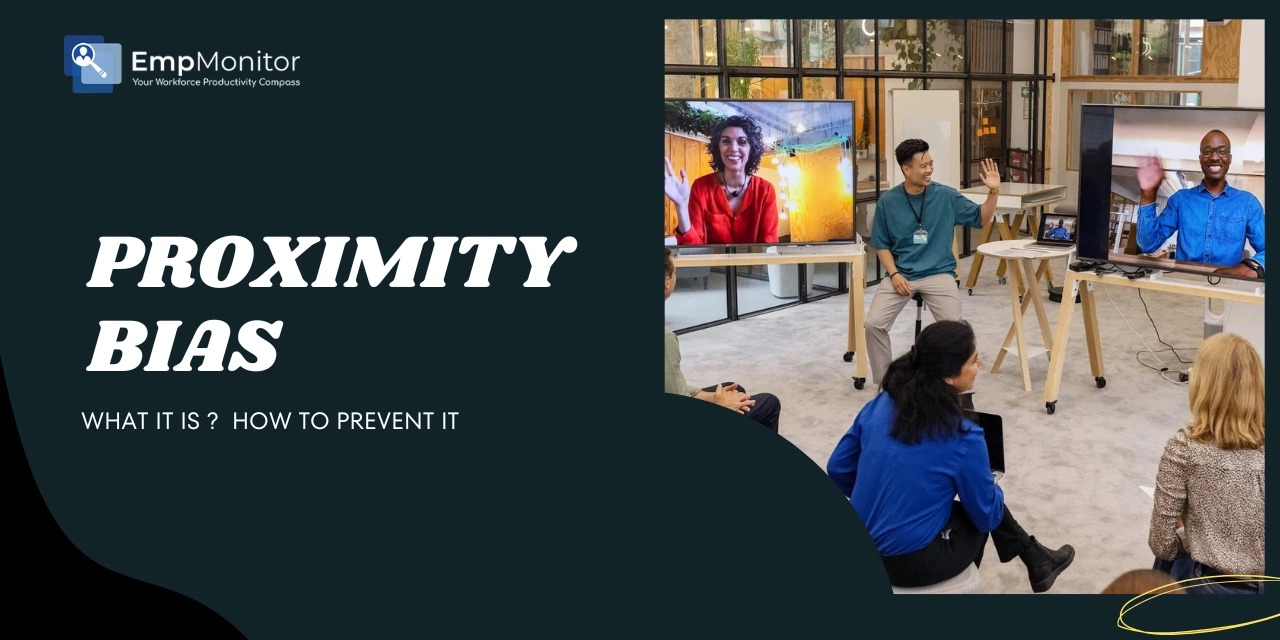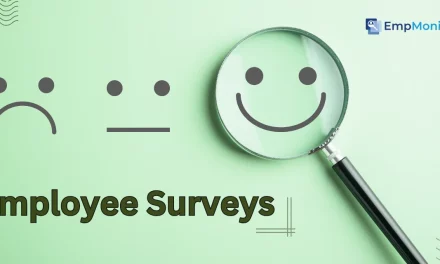Many teams face proximity bias, the habit of favoring those who work from the office over remote employees. It’s an unconscious behavior that can lead to unfair treatment, missed chances, and low morale for those working outside the office.
In this blog, we’ll explain what proximity bias is, why it matters, and how to avoid proximity bias. Whether you manage a team or work remotely yourself, understanding this bias helps create a fairer and more inclusive workplace for everyone.
In a hurry? Listen to the blog instead!
What Is Proximity Bias?
It is a form of unconscious bias where people give preferential treatment to those who are physically closer to them. In the workplace, this often means that employees who work from the office receive more attention, recognition, or career advancement opportunities than those who work remotely. As hybrid and remote work become more common, understanding this bias is more important than ever.
Managers and leaders may unintentionally believe that employees they see regularly are harder-working or more committed than remote employees. This isn’t necessarily true, but it’s a common perception because of frequent face-to-face interactions and casual conversations that happen naturally in an office setting. Remote workers, despite delivering great results, may be less visible and, therefore, less top-of-mind during promotions, feedback sessions, or team discussions.
This perception can cause serious harm in the long term. When remote employees feel left out or unfairly evaluated, it can lead to lower morale, reduced productivity, and even higher turnover. Proximity bias in the workplace also affects overall team performance, creating a divide between in-office and remote staff that can impact collaboration and trust.
The definition makes it clear that this behavior is based on presence, not performance. It’s not about intentional discrimination, but rather a subtle, ongoing imbalance that influences decisions and workplace culture. The key is to shift focus from visibility to outcomes.
Recognizing the proximity bias meaning is the first step toward creating a fairer, more inclusive environment. Companies should aim to support all employees equally, regardless of their work location. This includes setting clear performance metrics, promoting open communication, and using tools that provide visibility into everyone’s contributions.
Definition Of Proximity Bias?
Let’s start with the proximity bias definition: it is the assumption that employees who are seen more often in the office are harderworking, more reliable, or more dedicated than those working remotely. This perception often leads to better opportunities, recognition, or promotions for in-office workers.
It shows up in subtle ways; casual hallway conversations, spontaneous meetings, or even body language can influence decisions. Over time, these small moments create a big impact, leaving remote employees feeling undervalued.
Even in organizations that support remote work, the workplace can still create inequality, as decisions may be unintentionally influenced by physical presence rather than actual performance.
Why Does Proximity Bias Matter?
It matters because it directly impacts the fairness, equality, and inclusivity of any workplace. When promotions, raises, and important responsibilities are awarded based on physical presence instead of merit or performance, it creates a clear imbalance. Employees who work remotely may begin to feel excluded or overlooked, even when their output is equal to or better than that of their in-office counterparts.
This leads to a decline in engagement and motivation among remote staff. When employees sense that visibility outweighs actual contribution, it erodes trust in leadership and diminishes the value of remote work. Over time, this can result in increased turnover, poor team morale, and a toxic work environment where location, not ability, determines success.
In contrast, a fair workplace recognizes achievement and potential based on outcomes. Reducing proximity bias in the workplace fosters a culture where every employee, no matter where they work, is given equal opportunity to thrive. It encourages diverse work arrangements, builds stronger teams, and supports long-term organizational success.
That’s why addressing what proximity bias is and taking active steps to overcome it is essential. Equity in the workplace isn’t just a trend; it’s a foundation for innovation, trust, and growth.
Examples Of Proximity Bias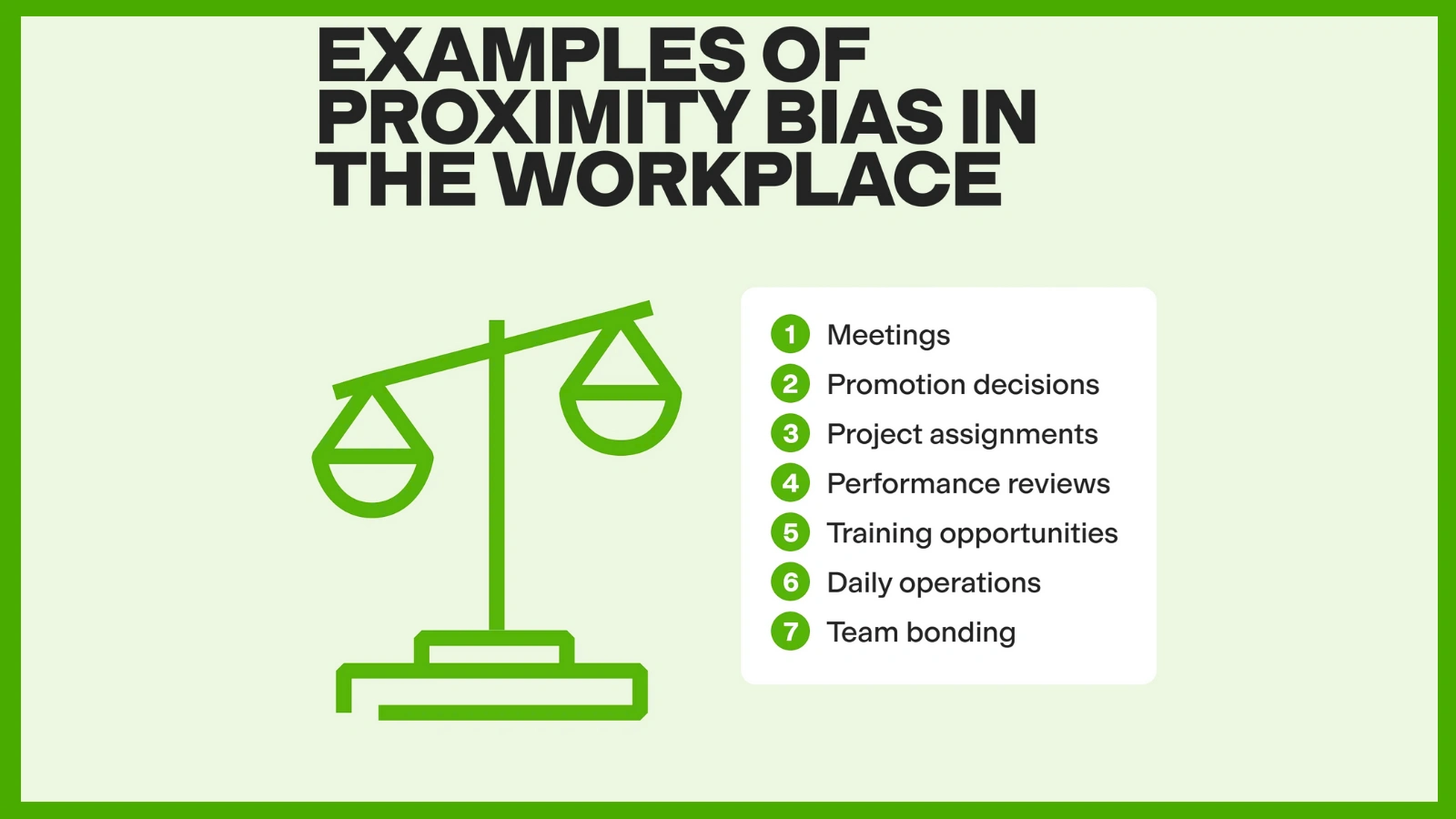
Promotion Preference: A manager consistently promotes in-office employees over equally performing remote team members simply because they are more visible.
Project Assignments
Key projects are given to people who are present in meetings physically, while remote workers are left out of important opportunities.
Casual Recognition
In-office employees receive frequent informal praise in hallway chats or team lunches, while remote workers miss out on similar recognition.
Assumed Engagement
Managers assume remote workers are less engaged or productive simply because they are not seen working in person.
Exclusion from Decision
Remote workers are unintentionally left out of spontaneous in-office discussions that lead to decision-making or strategy shifts.
Read More!
https://empmonitor.com/blog/remote-work-monitoring-software-best-usage/
How To Overcome Proximity Bias?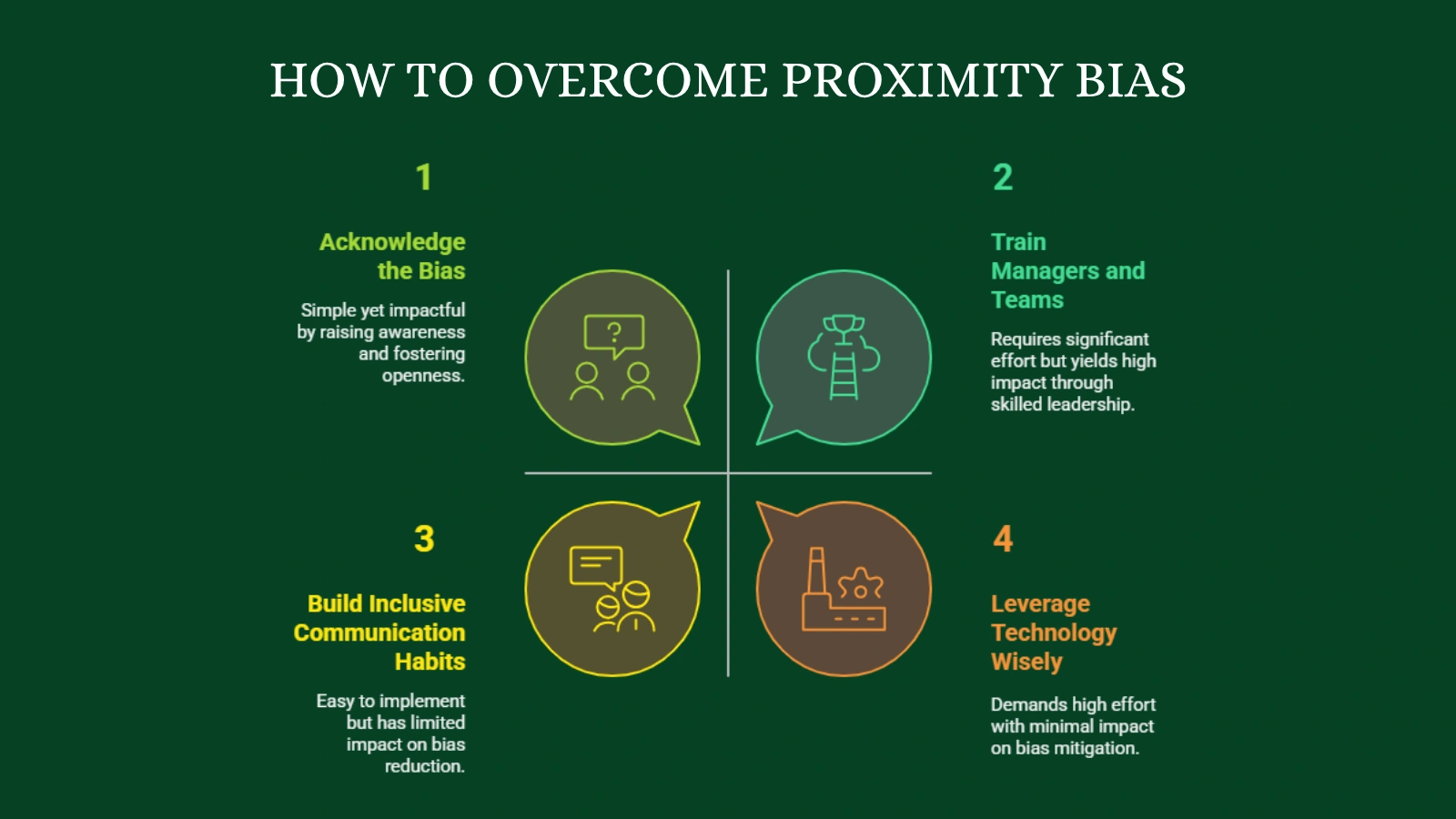
Overcoming it involves a conscious shift in workplace culture, tools, and leadership mindset. Here’s how organizations and leaders can make lasting change:
1. Acknowledge the Bias
The first step in tackling proximity bias is to openly recognize its existence. This can be done through team meetings, training programs, and internal communications where leadership speaks about the issue. When employees and managers are aware that this bias exists, they become more mindful of their actions and decisions. Awareness sets the foundation for building fairer and more balanced workplace practices.
2. Promote Outcome-Based Evaluation
Shift the focus from visibility to results by evaluating employees based on their performance and contributions. Use tools like KPIs, OKRs, and analytics platforms to track actual work outcomes, not presence. Whether an employee is working remotely or in the office, their impact should be measured in terms of goals met, quality of work, and collaboration. This helps ensure promotions and recognition are merit-based and inclusive.
3. Build Inclusive Communication Habits
Inclusive communication means making sure that all voices, including those of remote employees, are consistently heard. Use digital platforms like Slack or Microsoft Teams to keep everyone in the loop and promote transparency. Schedule regular check-ins with both remote and on-site team members to foster collaboration and reduce the feeling of isolation. Casual virtual chats can also replicate the informal bonding that typically happens in-office.
4. Equal Access to Opportunities
Remote employees often miss out on growth opportunities simply due to a lack of visibility. Companies should be proactive in offering them training, mentorship, and leadership roles just like their in-office counterparts. Avoid making assumptions about dedication or engagement based on location. Everyone should have equal chances to contribute, learn, and advance, regardless of where they work.
5. Leverage Technology Wisely
Use employee monitoring and productivity tools that measure work objectively rather than relying on presence. Platforms like EmpMonitor help track productivity, task completion, and focus time without bias. These tools offer data-driven insights into performance, allowing managers to make fair evaluations. They also promote accountability while giving remote workers a level playing field.
6. Train Managers and Teams
Regular training helps managers recognize and correct unconscious bias, including proximity bias. Workshops on inclusive leadership, empathy, and equitable team management can go a long way. Training ensures leaders understand the importance of fair decision-making and helps build an organizational culture rooted in inclusivity. Managers must lead by example in creating equitable experiences for all employees.
7. Encourage Feedback and Openness
Create open channels, like anonymous surveys or regular one-on-ones, where employees can safely share concerns or suggestions. Remote employees especially need spaces where they feel heard and supported. Regular feedback helps organizations identify blind spots and adjust policies or practices. A culture of transparency and trust boosts morale and fosters continuous improvement.
By implementing these practices, organizations can actively reduce proximity bias, improve employee engagement, and create a more inclusive and productive hybrid work environment. Let me know if you’d like to turn this into a blog or infographic!
Read More!
https://empmonitor.com/blog/real-time-employee-tracking-for-good-workplace/
https://empmonitor.com/blog/how-do-employers-track-remote-workers/
How To Prevent Proximity Bias In The Workplace?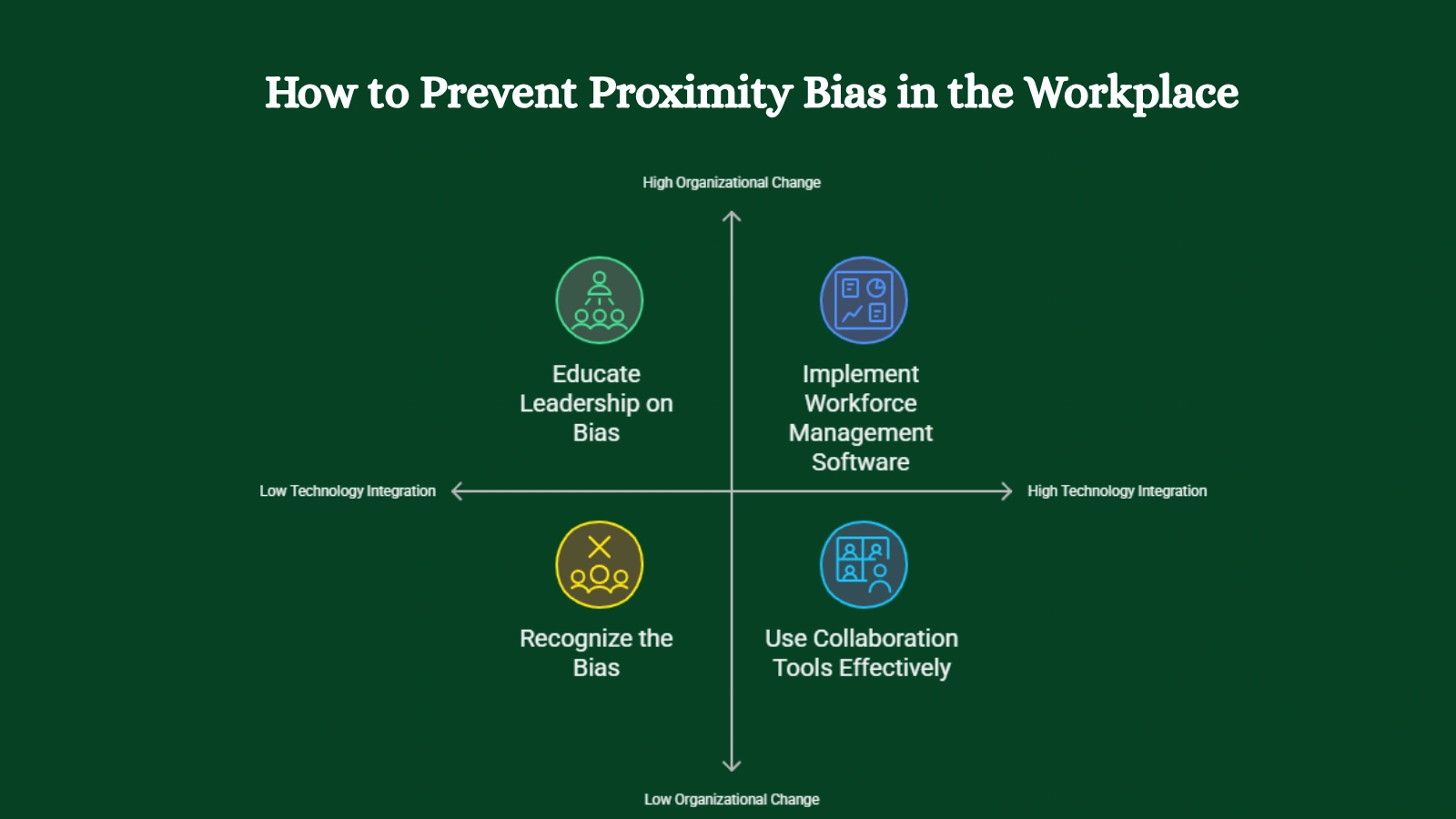
Preventing that starts with awareness and a commitment to inclusion. Here are expanded strategies organizations can adopt to build a fairer workplace:
Recognize the Bias
Acknowledge that proximity bias exists and actively assess how it may be influencing decisions or team dynamics. Leaders must engage in self-reflection and gather feedback to understand how often remote workers may be unintentionally excluded or undervalued.
Set Measurable Goals
Shift performance evaluation away from face time and instead focus on clear, trackable outcomes. Using data-driven metrics and KPIs ensures that all employees, regardless of location, are assessed fairly based on their actual contributions.
Create Equal Opportunities
Review and restructure processes to ensure that remote employees have the same access to key projects, professional development, and advancement opportunities. This includes offering virtual mentorship, inclusive training sessions, and regular check-ins to support growth.
Use Collaboration Tools Effectively
Adopt and optimize digital tools like Slack, Microsoft Teams, Zoom, and project management platforms to ensure seamless communication and collaboration across hybrid teams. These tools help eliminate communication silos and ensure everyone stays informed and involved.
Encourage Inclusive Meetings
Plan meetings with remote participation in mind. Use video conferencing, distribute agendas ahead of time, and rotate facilitation roles. Make a deliberate effort to solicit input from all attendees, ensuring no one is unintentionally left out.
Educate Leadership
Train managers and team leads to recognize and address unconscious bias. Leadership development programs should include modules on fair evaluation, empathy in hybrid management, and the impact of proximity bias on team performance.
Use Workforce Management Software
Leverage technology such as EmpMonitor to monitor productivity based on work output rather than location. These tools offer real-time data, performance analytics, and transparency that support fair evaluations across all team members.
Avoid Informal Biases
Discourage over-reliance on casual conversations or visibility in the office to gauge performance. Encourage a culture where documentation, task tracking, and consistent feedback play a bigger role in assessing achievements.
Together, these steps help prevent and ensure every employee has an equal opportunity to contribute, grow, and succeed, no matter where they work from.
How EmpMonitor Helps Reduce Proximity Bias In The Workplace?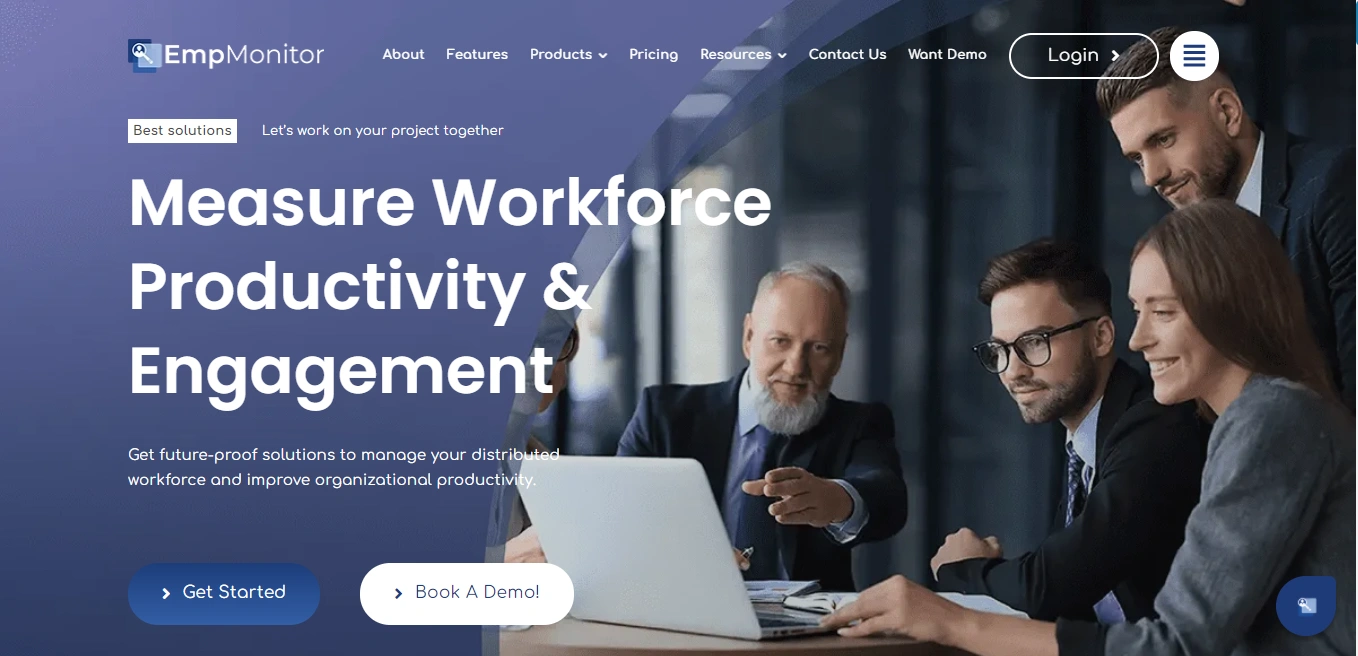
Proximity bias can quietly impact team dynamics, especially when remote employees are overlooked simply because they aren’t physically present in the office. EmpMonitor offers a practical way to level the playing field by shifting the focus from visibility to actual performance.
Here’s how its key features help eliminate proximity bias and support a more balanced, inclusive work environment:
Employee Monitoring Software
With EmpMonitor’s employee monitoring capabilities, managers no longer need to rely on who’s physically present in the office to judge performance. The software provides detailed insights into daily and hourly work patterns, capturing real productivity and engagement levels regardless of where an employee is working. By replacing assumptions with concrete data, managers can make informed, unbiased decisions that reflect actual effort and output, not visibility.
Time Tracking
EmpMonitor’s time tracking feature ensures that all employees tracking remote or in-office, are evaluated fairly based on their working hours. It automatically records active and idle times, making it easy to assess each team member’s contributions. Time reports are generated without manual input, allowing managers to recognize effort and productivity without defaulting to those they see the most often.
User Activity Monitoring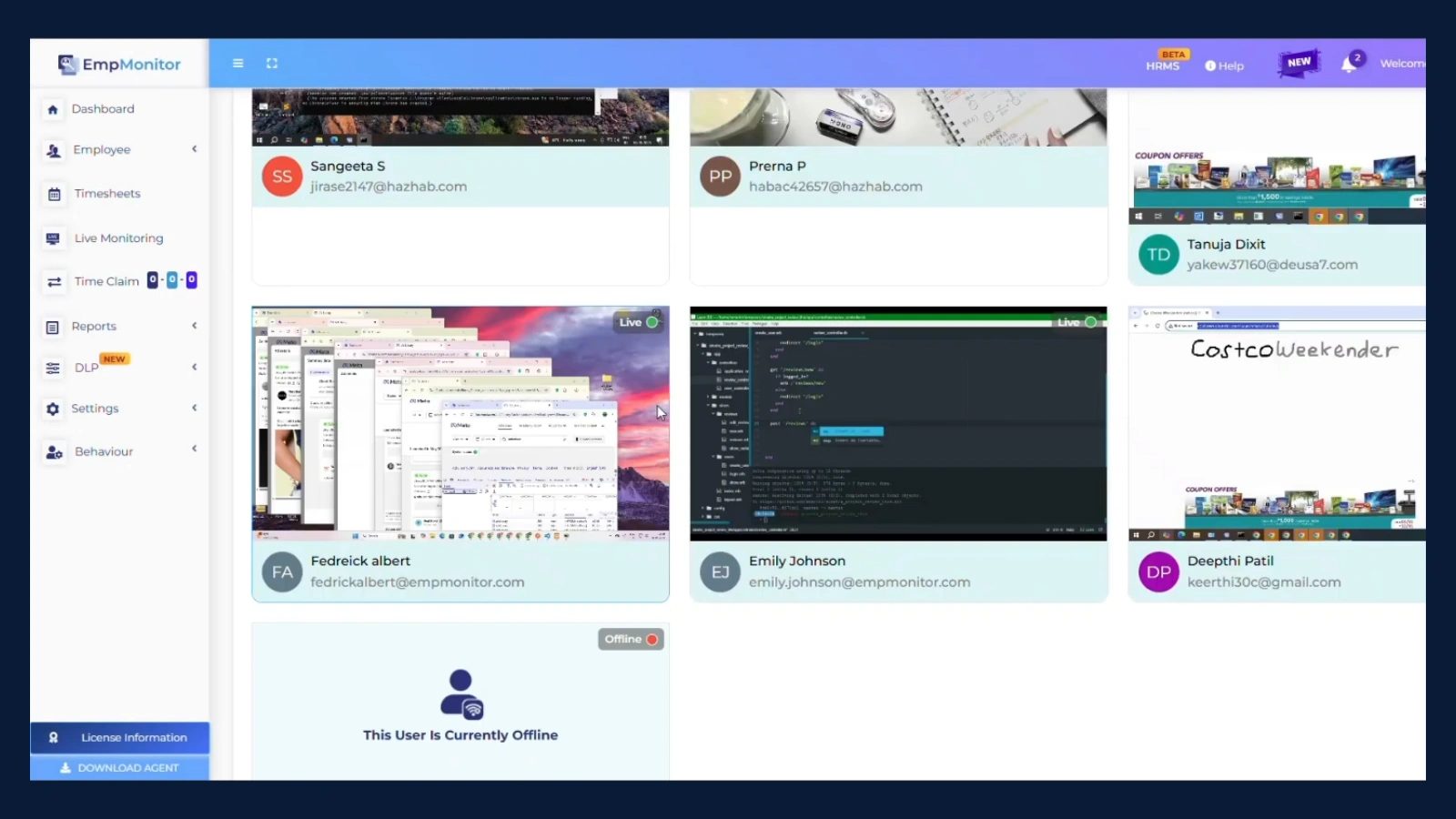
Understanding who is truly focused becomes easier with user activity monitoring. EmpMonitor logs tasks, website visits, and application usage in real time, helping organizations measure engagement based on actions, not presence. Context-rich data replaces guesswork, allowing recognition and feedback to be aligned with genuine contributions from both remote and on-site team members.
Attendance Monitoring
With precise attendance monitoring, managers can avoid giving unconscious preference to employees they physically see clocking in and out. EmpMonitor tracks check-ins, check-outs, and leaves digitally, creating a uniform system for all employees. This ensures that remote team members are acknowledged just as fairly as those in the office when it comes to attendance tracking and availability.
Workforce Productivity & Engagement
EmpMonitor shifts the focus from presence to performance by evaluating workflow patterns and overall productivity. It helps identify high-performing individuals even if they work miles away, by providing in-depth insights into task completion and engagement. This fosters a culture where contributions are valued across the board, encouraging motivation and inclusion for all team members.
Screen Recording & Live Monitoring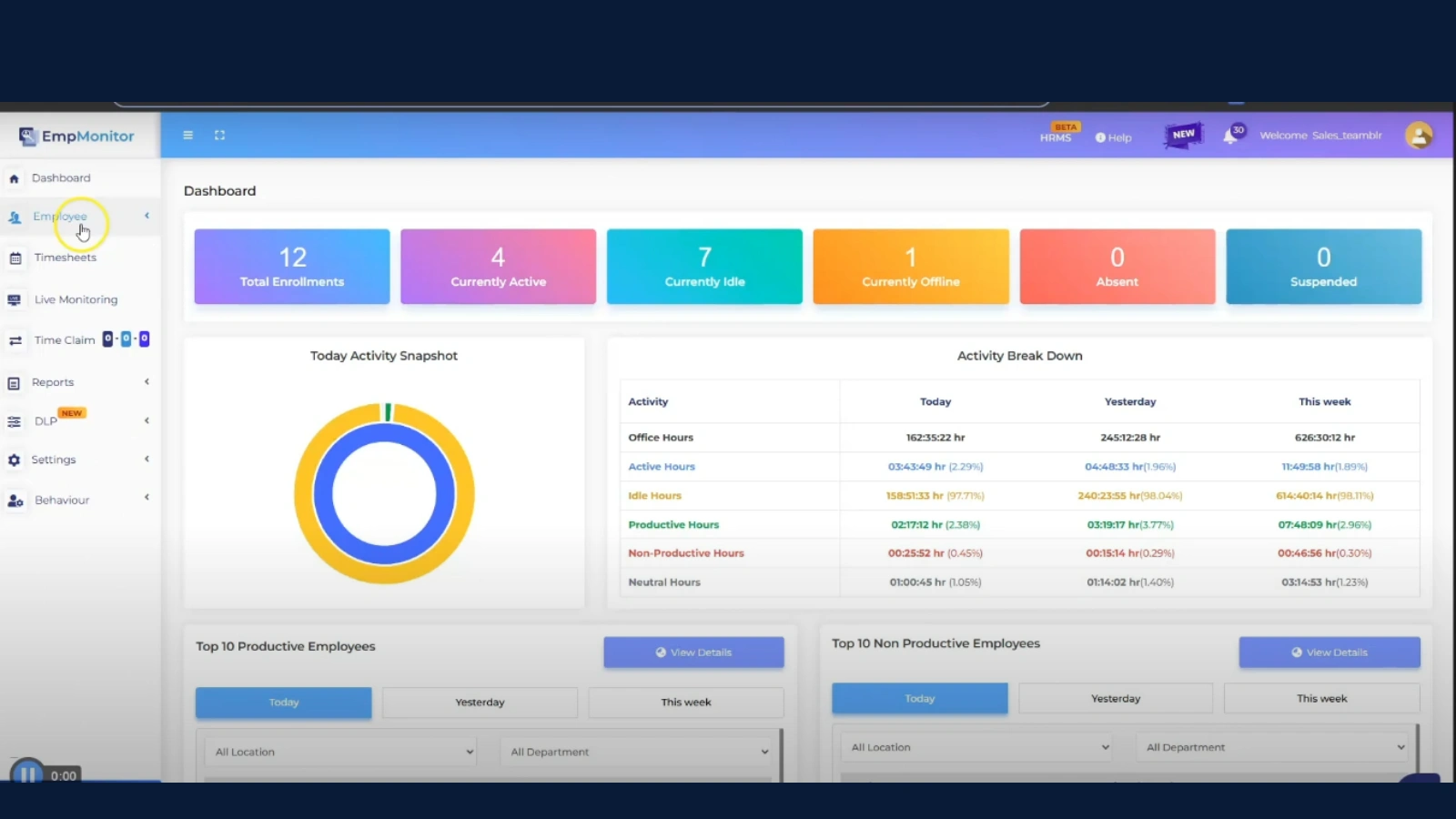
By recording employee screens and enabling live monitoring, EmpMonitor removes the guesswork from performance evaluations. Managers can review task progress or offer support based on actual screen activity, not assumptions about who’s around. Whether remote or in-office, employees are evaluated equally with transparent evidence of their work.
Insightful Reports & Visual Dashboards
EmpMonitor’s intuitive dashboards present performance trends clearly, allowing managers to make fair decisions around promotions, workload, and recognition. These reports ensure remote workers aren’t underestimated or overlooked, as all evaluations are based on tangible results rather than office impressions or casual observations.
Project & Task Management
Effective project management helps maintain equity across teams by assigning and tracking tasks regardless of location. EmpMonitor allows managers to monitor project progress, deadlines, and task completion in real time, ensuring everyone is held accountable for their contributions. Performance is judged by delivery and deadlines, not proximity to the manager.
Data Privacy & Fair Oversight
While monitoring is crucial, EmpMonitor also places importance on data privacy, creating a sense of trust among employees. Everyone is held to the same standards with transparent processes that eliminate bias. This balance of oversight and respect helps build a more inclusive and fair work culture across hybrid and remote teams.
By using EmpMonitor, companies can shift their focus from who is physically present to who is delivering results. This helps reduce that and promotes a more equal, productive, and motivated workforce.
Conclusion
Understanding and addressing are critical for any organization that wants to thrive in today’s work environment. From creating fair policies to using smart tools like EmpMonitor, every step toward equality matters.
Don’t let proximity bias in the workplace hold your team back. Empower all employees, whether remote or in-office, with equal chances to grow and succeed. Explore how EmpMonitor can help you build a performance-driven and inclusive workplace today.
FAQ
Q1: What is proximity bias?
It is the tendency to favor employees who are physically present in the office over those who work remotely. This often results in unequal treatment and missed opportunities for remote employees, even when their performance is strong.
Q2: Why is proximity bias a problem in today’s workplace?
With hybrid and remote work becoming more common, it can lead to remote workers being left out of promotions, praise, or critical projects. It creates inequality and can hurt employee morale and retention.
Q3: How can managers recognize proximity bias?
Managers can spot proximity bias when in-office staff consistently receive more recognition or opportunities, even if remote colleagues perform equally well. Using performance data and feedback from all team members helps identify bias.

